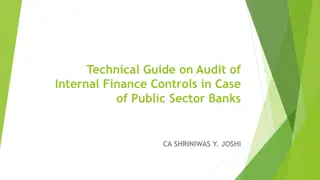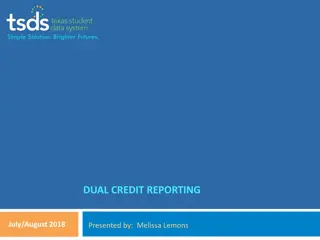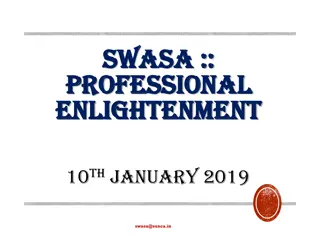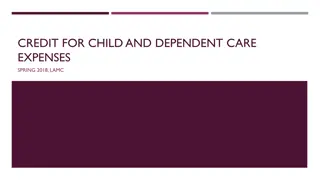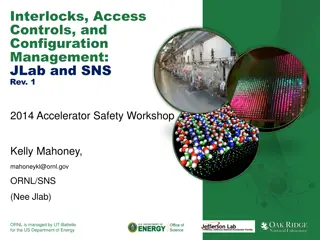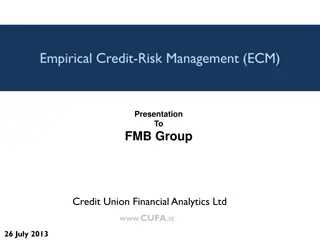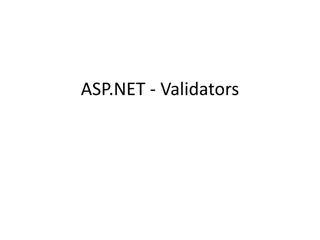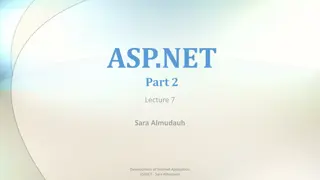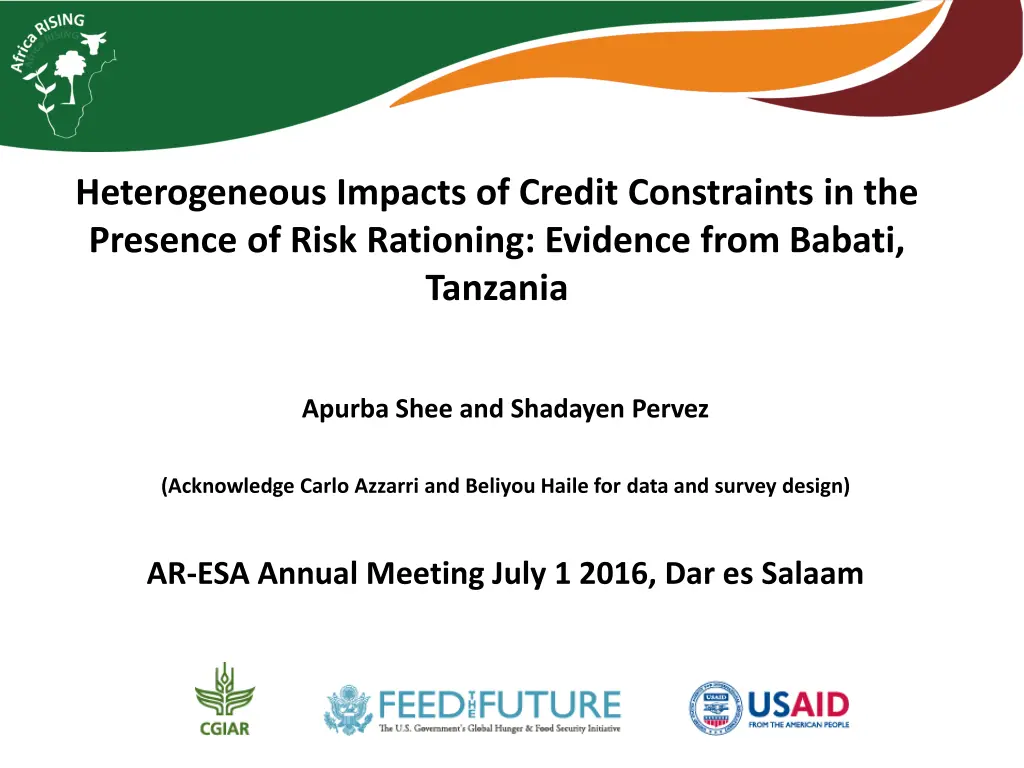
Impacts of Credit Constraints in Tanzania
Explore the heterogeneous impacts of credit constraints in Babati, Tanzania, focusing on risk and market deficit situations. The study investigates the econometric implications of essential heterogeneity, identifying credit rationing statuses among farmers. Experimental design and data collection methods are detailed, shedding light on the average cost of credit constraints on agricultural productivity for constrained, unconstrained, and the entire population.
Download Presentation

Please find below an Image/Link to download the presentation.
The content on the website is provided AS IS for your information and personal use only. It may not be sold, licensed, or shared on other websites without obtaining consent from the author. If you encounter any issues during the download, it is possible that the publisher has removed the file from their server.
You are allowed to download the files provided on this website for personal or commercial use, subject to the condition that they are used lawfully. All files are the property of their respective owners.
The content on the website is provided AS IS for your information and personal use only. It may not be sold, licensed, or shared on other websites without obtaining consent from the author.
E N D
Presentation Transcript
Heterogeneous Impacts of Credit Constraints in the Presence of Risk Rationing: Evidence from Babati, Tanzania Apurba Shee and Shadayen Pervez (Acknowledge Carlo Azzarri and Beliyou Haile for data and survey design) AR-ESA Annual Meeting July 1 2016, Dar es Salaam
Introduction and objective Credit rationing is a market deficit situation in which there exists a viable project but market can not supply credit; risk rationing is voluntarily withdrawal from credit market due to fear of losing collateral (Boucher et al. 2008, 2009) The difficulty in estimating the causal impacts of credit constraints is due to the fact that farmers credit constraint status is not exogenous the same observable and unobservable characteristics simultaneously determine both the output of the farm and its credit constraint status Generalized version of Heckman s selection model to account for farmers self-selection based on unobserved heterogeneity
Objective Explore the econometric implications of essential heterogeneity in the context of risk rationing 1. Identification and estimation of average cost of credit constraint on agricultural productivity for constrained, unconstrained, and the entire population
Experimental design and data Africa RISING (AR) started in the middle of 2012, farmers participating in AR are offered a menu of improved agricultural technologies Overlapping IFPRI evaluation project in Babati initiated in Jun 2013 400 participants were recruited randomly about half farmers were randomly selected to receive fertilizer and seeds via coupon distribution In Nov 2013 (ag season) coupon households received 50 kg fertilizer and 4 kg improved seeds AR baseline evaluation survey in Mar 2014 Direct elicitation of credit rationing status survey in Sep 2015
Identifying credit rationing status Local banks, cooperatives or grain buyers offer me loan without me requesting a loan I must formally request a loan from local banks, cooperatives or gain buyers. Mutually exclusive rationed True True 1. On the most recent loan offer, approximately how much did your banks/cooperatives/grain buyers offer to lend you? 4. Have you applied for a loan from local banks, cooperatives or grain buyers within past two years? Yes No 2. How much of loan (Tzs) did you actually use? 9 Why? Because you are afraid of losing collateral? 5. On the most recent loan request, how much loan in Tzs did you request? If Q2<Q1 If Q2 = Q1 6. How much did bank/ cooperative /grain buyer offer to you? Yes No No Risk rationed Quantity rationed Price rationed 3 Why? Because you are afraid of losing collateral? Price rationed No Yes 7. (If answer to Q6 is greater than zero) Did you accept the offered loan? Price rationed Risk rationed If Q6 = 0 or Q6<Q5 Quantity rationed Yes No Price rationed 8 Why? Because you are afraid of losing collateral? Yes No Risk rationed Price rationed
Rationing mechanism Frequency Percent Maize yield in kg/ha Revenue in $/ha Unconstrained 119 29.8 3,178.50 531.27 Quantity rationed 52 13 2,978.80 500.87 Risk rationed 229 57.3 2,790.30 446.5 Avg per hectare revenue by credit rationing status Avg maize yield by credit rationing status 3500 600 550 Kg/ha $/ha 3000 500 450 2500 400 Unconstrained Risk rationed Quantity rationed Unconstrained Risk rationed Quantity rationed
Heterogeneous treatment effect estimates for revenue Revenue Coefficient Percentage difference OLS ATE ATET ATENT Sorting bias -0.14 -0.21 -0.11 -0.47 -14% -19% -11% -38% 8% (ATET-ATE) Selection bias (OLS-ATET) -3% Average cost of constraint for the entire population is 19%, If the constraint is removed form a constrained farmer, on average his revenue is expected to increase by 11%, If credit constraint is imposed on an unconstrained farmer, he is expected to suffer a very high 38% loss in revenue.
Distributions of ATE(x), ATET(x) and ATENT(x) Comparison of ATE(x) ATET(x) ATENT(x) 4 3 Kernel density 2 1 0 -.8 -.6 -.4 -.2 0 .2 ATE(x) ATENT(x) ATET(x) The distribution of cost of constraint is higher for the unconstrained group than that of the constrained group. The modal point for ATET(x) seems to have pulled the modal point for ATE(X) toward zero. This underscores the importance of considering heterogeneity and entire distribution of costs and not just the average estimate.
Heterogeneous treatment effect estimates for maize yield Maize yield Coefficient Percentage difference OLS ATE ATET ATENT Sorting bias selection bias -0.16 -0.151 -0.083 -0.319 -0.068 -0.077 -15% -14% -8% -27% 6% -7% Comparison of ATE(x) ATET(x) ATENT(x) 3 2 Kernel density 1 0 -1 -.5 0 .5 ATE(x) ATENT(x) ATET(x)
Conclusion The average cost of credit constraint for the entire population of farmers in our study area is about 19% loss in agricultural productivity If the constraint is removed from a constrained farmer, on average his/her productivity is expected to increase by 11%, and if credit constraint is imposed on an unconstrained farmer, he/she is expected to suffer a very high 38% loss in productivity Full characterization of distribution allows us to consider specific questions of policy interest: who are the observable groups with highest costs of constraints. Second, what are the average costs of constrains for the farmers within certain observable groups








